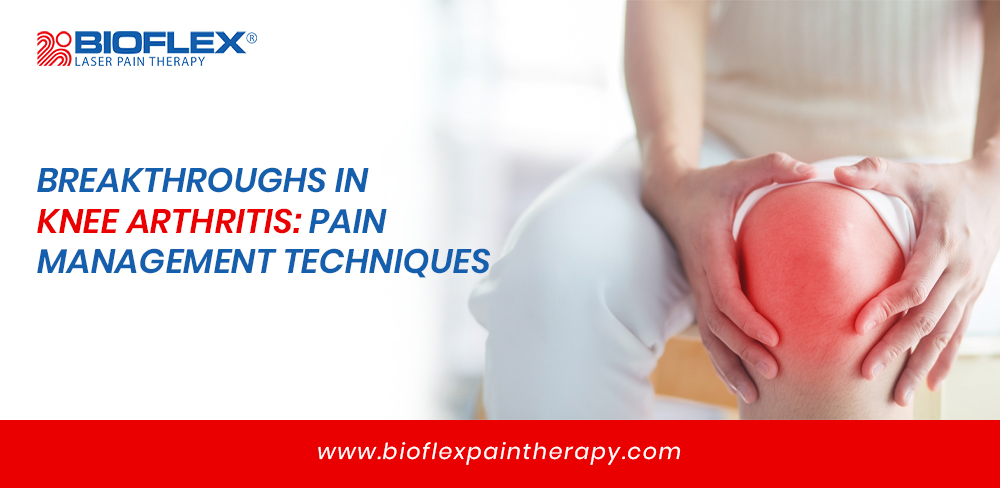New approaches are being considered for the treatment of knee arthritis, a disorder that can greatly limit one’s ability to go about one’s everyday life. Here, you may find up-to-date information about medicinal discoveries that are helping people with knee arthritis live better lives. Furthermore, we’ll take a look at these revolutionary breakthroughs in knee arthritis, explaining how they change the game when it comes to pain and mobility. As we delve into the most recent findings, you’ll see how these innovations are improving the lives of those coping with this difficult illness.
Understanding Knee Arthritis: Causes and Symptoms
Knee arthritis is a familiar condition that affects the joints in the knee, leading to pain, stiffness, and reduced mobility. It’s critical to comprehend the causes and symptoms of this condition to manage it effectively.
Causes of Knee Arthritis:
- Age: The most common cause of knee arthritis is aging. As we grow older, the cartilage in our knee joints gradually wears away, leading to arthritis.
- Wear and Tear: Furthermore, regular and intense physical activities or jobs that put a lot of stress on the knees can also accelerate the wear and tear of cartilage.
- Injuries: Previous knee injuries, such as torn cartilage or ligament damage, can increase the chance of developing arthritis in the knee.
- Obesity: Having excess weight puts additional pressure on knee joints, speeding up the wear and tear process.
- Genetics: Sometimes, knee arthritis can run in families.
- Other Health Conditions: Diseases like rheumatoid arthritis or metabolic disorders can also lead to knee arthritis.
Symptoms of Knee Arthritis:
- Pain: The most common symptom is a soft, aching pain in the knee, which may become sharper during activities.
- Swelling and Warmth: The affected knee might swell and feel warm to the touch, especially after extended activity.
- Stiffness: Stiffness in the knee, particularly in the morning or after sitting for a long time, is a common symptom.
- Decreased Mobility: As the condition progresses, you might find it difficult to straighten or turn your knee entirely.
- Crepitus: A grating or crackling sensation or sound when moving the knee, known as crepitus, can occur.
- Deformity: In advanced cases, the knee may start to look bowed or deformed.
Revolutionary Breakthroughs in Knee Arthritis Treatment
The role of technology in treating knee arthritis has become increasingly significant, offering new hope and improved outcomes for patients. With advancements in medical technology, the approach to managing knee arthritis has evolved, bringing more precise and effective treatments.
Physical Therapy
Pain and knee joint stiffness are common symptoms of arthritis. Strengthening the muscles that support the knee via physical therapy helps alleviate discomfort. To improve blood circulation to the knee, therapists can employ a variety of techniques, including electrical nerve stimulation, cold and heat, and others. When compared to self-help methods, therapy with a trained professional may often yield far better results.
Laser Treatment
Because of the photobiomodulatory (PBM) effect that laser irradiation may have on cells and tissues, laser treatment is a non-invasive approach that promotes quicker healing and tissue repair, helps to reduce inflammation, and relieves pain. Wavelength, energy density, power output, and radiation duration are four of the many variables that determine the usefulness of the many different types of lasers that are on the market.
Laser laser therapy (LLLT) involves directing a 30-second burst of light into your knee rather than damaging the skin. This intense burst of light travels all the way into the knee, where it causes chemical reactions that aid in the repair and regeneration of injured tissues and cells. This effectively treats knee pain and arthritis conditions.
Medicines
Despite doctors’ best efforts to reduce drug loads, there are a variety of effective treatments for knee arthritis. Knee arthritis symptoms such as pain, edema, and stiffness can be successfully alleviated by over-the-counter nonsteroidal anti-inflammatory drugs (NSAIDs). These drugs are widely accessible, and the majority of patients report little side effects when using them. Nonsteroidal anti-inflammatory drugs (NSAIDs) aren’t the only nutrients that can alleviate knee arthritis. When it comes to knee arthritis, glucosamine sulfate and hyaluronic acid are the two most popular options.
Intramuscular Injections
Getting an injection is usually the next step if you’ve tried medicine and treatment for your knee arthritis pain and it persists. A corticosteroid injection is the first step in this procedure and can significantly decrease swelling, discomfort, and inflammation. The effects of these injections may be both immediate and sustained. Another alternative to cortisone is hyaluronic acid injections, which may be more effective in alleviating pain. Lubricating the knee with hyaluronic acid can help with movement and discomfort.
Surgery
When it comes to knee arthritis, there are a few surgical options to choose from. A number of criteria, including the surgeon’s preferences and expertise, the patient’s age, anatomy, overall health, lifestyle, and personal preferences, will determine which, if any, surgical procedures are advised.
Nutritional Approaches and Lifestyle Changes
Dietary approaches and lifestyle changes can play a significant role in managing knee arthritis. Adopting a nutritional diet and making certain lifestyle adjustments can help reduce inflammation, ease pain, and improve overall joint health.
Anti-Inflammatory Diet
Some people find relief from inflammation after eating certain foods. This includes fatty fish rich in omega-3 fatty acids (like salmon and mackerel), nuts, seeds, and leafy green vegetables. Spices such as turmeric and ginger are also known for their anti-inflammatory effects.
Maintain a Healthy Weight
Additionally, excess weight puts pressure on your knees, exacerbating arthritis pain. Losing weight through a balanced diet can help reduce this pressure and relieve symptoms.
Stay Hydrated
Besides this, the right amount of hydration is also essential for maintaining the health of your cartilage, which cushions the joints.
Regular Exercise
Moreover, engaging in frequent, low-impact exercises like walking, swimming, or cycling can support the muscles around your knees. It also improves support and flexibility. Exercise also helps in weight management and overall health.
Adequate Vitamin and Mineral Intake
Ensure your diet includes enough vitamins and minerals, particularly Vitamin D and calcium. Moreover, supplements may be necessary if you need to get more from your diet.
Joint Protection Techniques
Learn and practice joint protection techniques to minimize stress on your knees. This can include using assistive devices, modifying activities, and learning proper body mechanics.
Conclusion
In conclusion, the breakthroughs in knee arthritis have opened up a world of new possibilities for pain management. These advancements are changing lives, offering more effective and personalized ways to tackle knee pain. Moreover, from innovative medications and therapies to modern surgical techniques, the progress in this field is truly remarkable. As we continue to embrace these breakthroughs in knee arthritis, patients can look forward to better pain control, improved mobility, and a higher quality of life. Hence, the future of arthritis treatment and knee pain treatment is bright, and it’s filled with hope for those looking for relief from this challenging condition.


